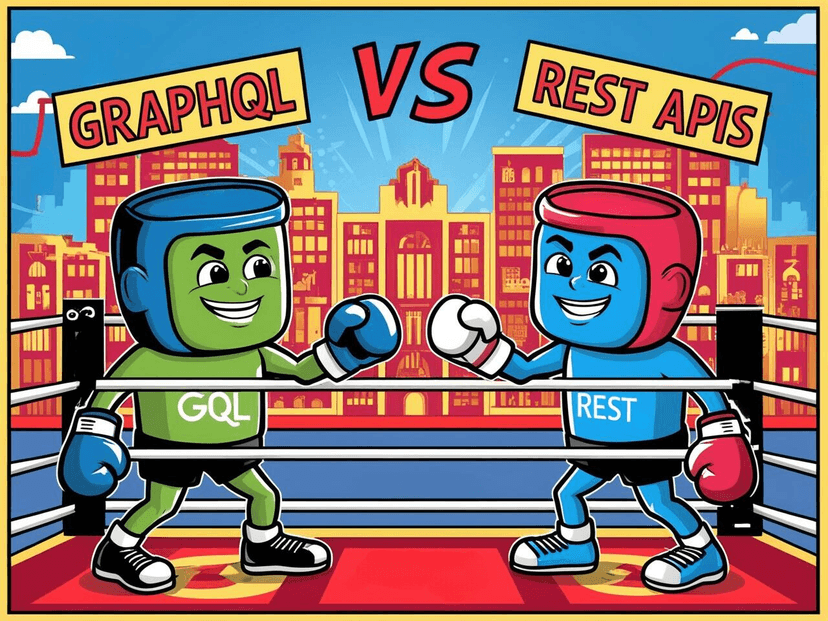GraphQL vs. REST: The Ultimate Showdown in API Land


Jonathan Bracho
Nov 10, 2024
In the world of APIs, two titans reign supreme: GraphQL and REST. It’s like the Marvel vs. DC debate of the development universe. Both have their strengths, their fans, and their quirks. But which one should you choose for your next project? Let’s dive into a lighthearted yet practical comparison, complete with real-world scenarios and the occasional jab.
Round 1: Data Fetching – The Single Query vs. The Overfetch
GraphQL: Imagine ordering sushi, and you get exactly the rolls you asked for—nothing more, nothing less. GraphQL lets you fetch only the data you need, no extra baggage.

REST: It’s like ordering a combo meal when you just wanted fries. Fetching a user and their posts often means multiple API calls or bloated responses with data you don’t need.

Verdict: GraphQL takes this round for efficiency. REST, we love you, but we don’t need the whole buffet every time.
Round 2: Flexibility – Tailor-Made vs. One-Size-Fits-All
GraphQL: Need user names, emails, and their latest blog post? Done. Want just the user’s phone number? Easy. GraphQL’s flexible queries are like building your sandwich at a deli.
REST: REST endpoints are like a fixed menu. If /users doesn’t give you what you want, you’re stuck—or you call /users/:id/details. More endpoints mean more maintenance.
Verdict: GraphQL wins again for being the Swiss Army knife of APIs. REST, you’re great for predictable, simple needs, but GraphQL is the go-to for custom orders.
Round 3: Learning Curve – Simplicity vs. Power
REST: REST is straightforward. Even non-developers can guess how GET /users works. It’s intuitive and beginner-friendly.
GraphQL: GraphQL is like the final boss in a video game. It’s powerful but requires a learning curve. Understanding schemas, resolvers, and queries takes time.
Verdict: REST wins this one for accessibility. GraphQL, we’ll call you when the team levels up.
Round 4: Real-Time Capabilities
GraphQL: Thanks to subscriptions, GraphQL shines in real-time data scenarios like chat apps or stock tickers.

REST: Real-time updates in REST often rely on workarounds like polling or WebSockets, which add complexity.
Verdict: GraphQL steals the spotlight here. REST, it’s time to retire your polling strategy.
Round 5: Performance – Efficiency vs. Simplicity
GraphQL: GraphQL reduces overfetching, but it can overburden your server with complex queries. Misuse of GraphQL can lead to performance bottlenecks.
REST: REST’s simplicity is its strength. Each endpoint is optimized for specific data, reducing server strain.
Verdict: It’s a tie! REST is better for high-performance, predefined use cases, while GraphQL excels in flexibility.
The Final Decision: Context Matters
Choosing between GraphQL and REST isn’t about which one is "better"; it’s about what suits your project:
- Go with GraphQL if: Your app needs flexible queries, real-time data, or you want to reduce overfetching/underfetching.
- Stick with REST if: You need simplicity, cache-friendly APIs, or your team is just starting out.
In the end, GraphQL and REST aren’t enemies—they’re tools. And as any good developer knows, the best tool is the one that gets the job done.